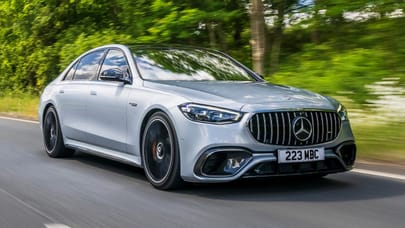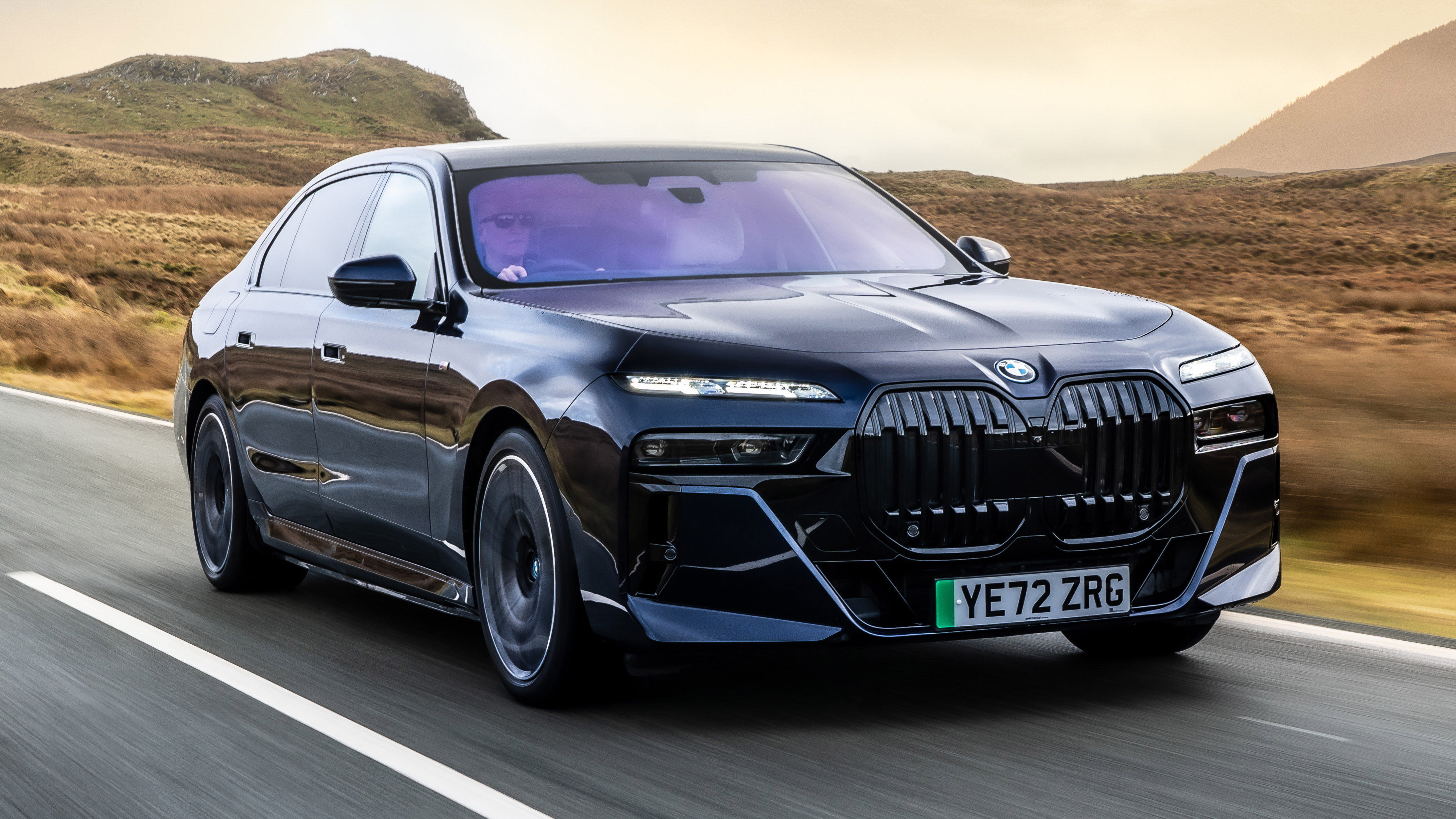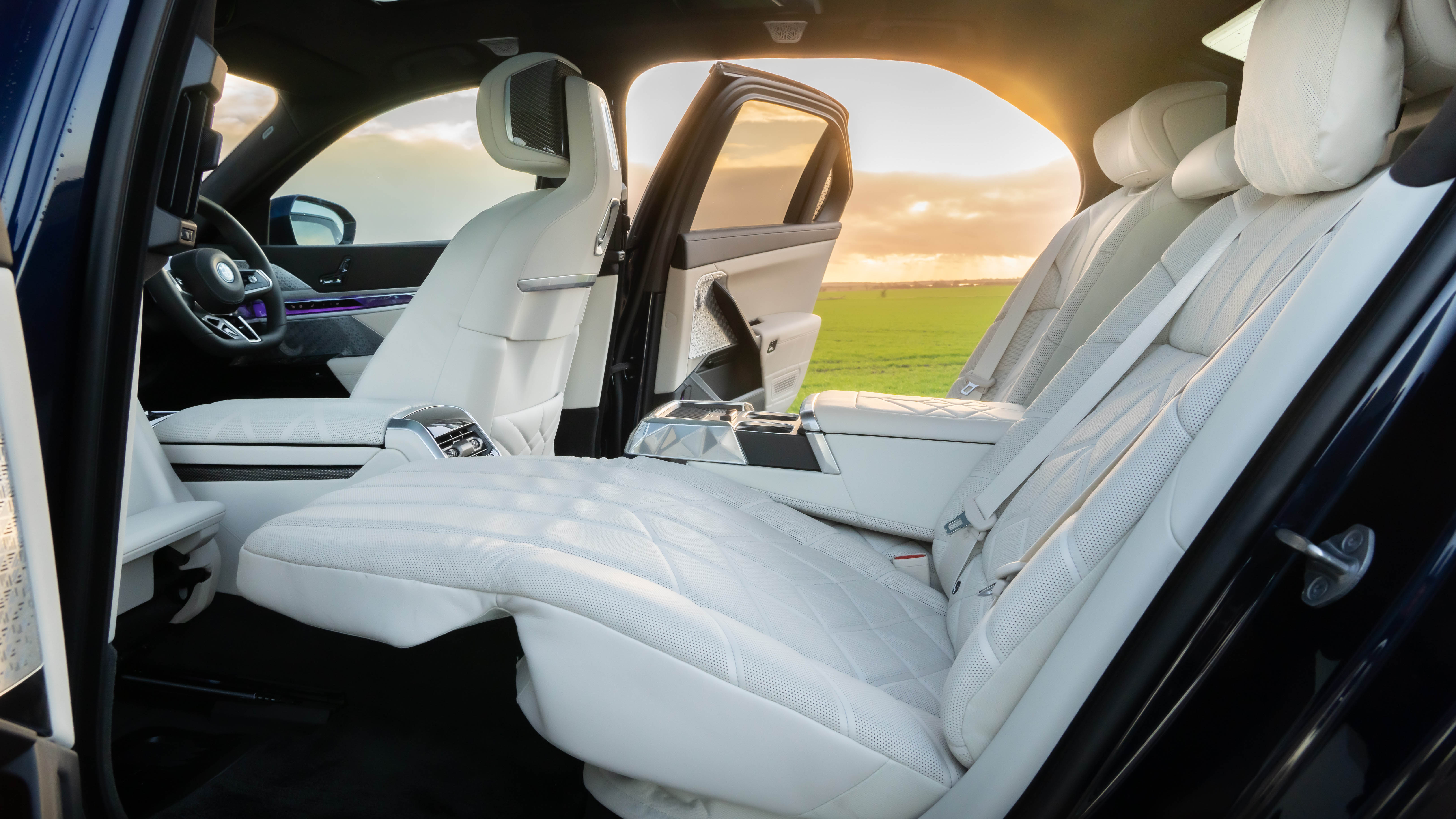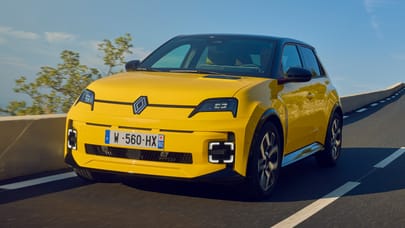
Good stuff
Drives superbly, incredible refinement, fabulous interior
Bad stuff
Some of the tech is overwhelming, it’s heavy, the design will provoke debate
Overview
What is it?
This is the i7, BMW’s sixth pure electric car although it’s wrapped up in the guise of the all-new 7 Series. That’s right: rather than hive off its electric luxury limo in the manner of the Mercedes EQS or Porsche Taycan, the i7 arrived at the same time as the rest of the regular new 7 Series range. In fact, it actually came to the UK before the petrols, diesels and hybrids, and at the time of writing in 2023 the i7 is still the only current-gen 7 Series we’ve tested on our shores.
“It’s a 7 Series, regardless of drivetrain,” insists BMW.
This is actually the seventh generation of the company’s range-topper, a model which debuted in 1977 offering more poise and a greater dynamism than Mercedes’ rather patriarchal and uptight S-Class, and more modernism than Jaguar’s gin and cigars XJ. Around two million have since been sold, and the innovations have come thick and fast.
Remember, it was 2001’s gen four car that ushered in the Bangle design era and premiered the over-wrought iDrive. Yet the received wisdom is that the Mercedes S-Class has always had the edge as the putative ‘best car in the world’, which is probably rather annoying. You get the sense that BMW has chucked everything it knows into the new car in an effort to finally, definitively get the upper hand on the old foe.
The rules have changed, though, and the electric i7 moves centre stage as BMW re-frames the luxury car experience around on-board well-being, a class-leading digital experience via its new OS8 software, and standard-setting sustainability. Oh, and a huge 31.3in panoramic television (‘theatre’) screen that folds out of the roof for the rear-seat passengers. Everyone got very juiced up about that. Who knows, it might be good to drive, too.
Please tell us that it looks better in the flesh...
There’s no doubt BMW has committed itself to a challenging new design philosophy. Some critics – i.e. virtually all of the internet – seem to think the new 7 Series is further proof that BMW has taken leave of its senses (or less pleasant words to that effect). On the move, it kinda works. No, really. In white, with all the shiny bits in gloss black, or fully, erm, ‘murdered out’ in matt paint, it’s modern and defiantly, unapologetically different. The M Sport Package Pro helps, and adds 21in alloy wheels and bigger brakes (19in wheels are standard but under-nourished). Think all new cars look the same? Not here, they don’t.
That huge grille illuminates at night and the upper lights are the focal point, with the option of Swarovski ‘iconic glow’ crystal glass. This face sure is in-your-face. The low- and high-beam headlights are recessed into the front apron; adaptive LEDs are standard. The new 7 Series could flood-light a Coldplay concert.
Oddly enough, it’s not the split-level lights and brick out-house front end that bothers us, it’s the rear where the new 7 Series loses the courage of its convictions and becomes oddly generic. Which is ironic given the rumpus 2001’s E65 iteration caused back in the day.
It looks humongous...
Although it is bigger in every dimension and blocky looking, the long wheelbase-only new 7 Series is also highly aerodynamically efficient. This is key in the world of EVs, in which slipperiness equates to efficiency, and the i7’s drag coefficient is just 0.24. Back in the early Eighties aero was a big deal in car design. Well, it’s happening again, and it’s doing funny things to the way cars look.
Understood. What else is new?
Pretty much everything. BMW says that the new 7 Series was ‘designed from the ground up for particularly demanding target groups in a globalised marketplace’. It has greater body rigidity, a wider front and rear track, and it’s generally bigger and more purposeful. It uses a new steel and aluminium flexible vehicle architecture engineered from the start to accommodate three different drive types.
We’ll focus on the i7 for now. The mid-level xDrive60 has a combined 536bhp from two electric motors, its hardware very similar to the set-up in the excellent iX SUV. The front motor delivers 255bhp, the rear one 308bhp, with 549lb ft of torque overall. And nope, that doesn’t quite add up: “The complete system output depends on all the electric powertrain components and cannot be simply added together,” says BMW. The claimed 0-62mph time is 4.7 seconds and the top speed is limited to 149mph.
Other i7 powertrains include the entry-level, rear-wheel drive eDrive50 with 449bhp or the all-out M70 xDrive that gets a staggering 650bhp and a 0-62mph time of 3.7 seconds. That makes it essentially a mobile cinema that’s just about as quick as a V12-engined Lamborghini Murcielago.
So, as you might have guessed, there’s constant progress in terms of powertrain evolution, and we’re now up to Generation Five of BMW’s electric system. The drive units are compact and carefully integrated, and BMW says that the charging software has been improved compared to the i4 saloon and iX. The battery’s temperature is now even more precisely controlled, for improved efficiency and a smoother charging curve. The battery’s cooling has been optimised, too, and it’s possible to store customised charging settings for specific charging points. You can also manually pre-heat the battery when you’re heading to a fast charger. And because the motor uses an electrically excited synchronous motor rather than one with fixed permanent magnets, BMW says it has eliminated the need for rare earth metals in the rotor.
The lithium-ion battery pack in all i7s provides 101.7kWh of useable energy, and with a cell height of just 110mm sits comfortably under the floor. Interestingly, range is apparently at its best in the twin-motor xDrive60, where BMW quotes up to 387 miles on a full charge. The company has also worked hard to keep the best- and worst-case range scenarios closer together, which is a valuable USP. Find a 195kW rapid charger and BMW claims you can add 106 miles in about 10 minutes too. That’s the sort of mid-journey energy bump that matters in the real world.
China is its biggest sales region, and owners there – 95 per cent male – are an average age of 38 versus 56 in the US and 57 in Europe. Clearly, the demographics have changed somewhat over the years. Bear it all in mind when you’re looking at the new car.
What if I don’t want a full EV?
When the latest 7 first arrived the answer to that question was pretty much “tough luck”. But now you’re almost spoilt for choice. We don’t get every available ICE powertrain in the UK, but you can still choose between the 750e xDrive and the M760e xDrive. Both are plug-in hybrids with straight-six petrol engines, but while the former makes do with 483bhp and 516lb ft of torque, the latter gets 563bhp and 590lb ft.
What's the verdict?
This is a fascinating moment in the evolution of the electric car. Being able to judge the i7 directly against its petrol-engined equivalent suggests that a crossover point has been reached. BMW, it appears, is on a rapid upward trajectory with its EVs, and the i7 is a phenomenally accomplished machine.
And it’s a machine with real character, which is a major achievement. BMWs have always relied on their mostly great engines for the soul and sensation we all crave, as well as their dynamics, but the focus is shifting elsewhere now. The new 7 Series has arguably the finest interior in the automotive world, beautifully executed, well-made and imaginative. You can argue among yourselves about the exterior design, but inside is a knock-out.
It’s blissfully smooth, fast and easy to drive, and impressively efficient for such a large car. A lot of clever, highly motivated people have dug very deep here and you can tell. The i7 is one hell of a car.









